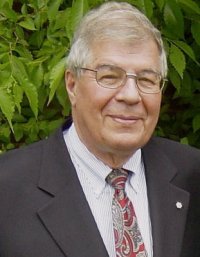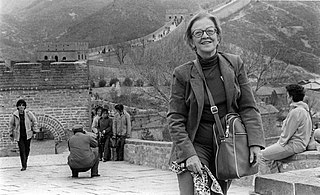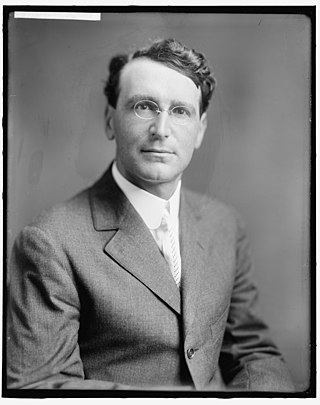Related Research Articles
Continental drift is the hypothesis, originating in the early 20th century, that Earth's continents move or drift relative to each other over geologic time. The hypothesis of continental drift has since been validated and incorporated into the science of plate tectonics, which studies the movement of the continents as they ride on plates of the Earth's lithosphere.

The age of Earth is estimated to be 4.54 ± 0.05 billion years (4.54 × 109 years ± 1%). This age may represent the age of Earth's accretion, or core formation, or of the material from which Earth formed. This dating is based on evidence from radiometric age-dating of meteorite material and is consistent with the radiometric ages of the oldest-known terrestrial material and lunar samples.

A volcanologist, or volcano scientist, is a geologist who focuses on understanding the formation and eruptive activity of volcanoes. Volcanologists frequently visit volcanoes, sometimes active ones, to observe and monitor volcanic eruptions, collect eruptive products including tephra, rock and lava samples. One major focus of inquiry in recent times is the prediction of eruptions to alleviate the impact on surrounding populations and monitor natural hazards associated with volcanic activity. Geologists who research volcanic materials that make up the solid Earth are referred to as igneous petrologists.

Arthur Holmes was an English geologist who made two major contributions to the understanding of geology. He pioneered the use of radiometric dating of minerals, and was the first earth scientist to grasp the mechanical and thermal implications of mantle convection, which led eventually to the acceptance of plate tectonics.

Preston Ercelle Cloud, Jr. was an American earth scientist, biogeologist, cosmologist, and paleontologist. He served in the United States Navy, and led several field explorations of the U.S. Geological Survey. In academia, he was a member of the faculty of Harvard University, University of Minnesota, University of California, Los Angeles, and lastly University of California, Santa Barbara. He was best known for his work on the geologic time scale and the origin of life on Earth, and as a pioneering ecologist and environmentalist. His works on the significance of Cambrian fossils in the 1940s led to the development of the concept "Cambrian explosion," for which he coined the phrase "eruptive evolution."
W. Gary Ernst is an American geologist specializing in petrology and geochemistry. He currently is the Benjamin M. Page Professor Emeritus in Stanford University's department of geological sciences.

Raymond Alexander Price, is a Canadian geologist. He has used his research on the structure and tectonics of North America’s lithosphere to produce extensive geological maps. He has also provided guidance for nuclear fuel waste disposal and reports on the human contribution to Global warming.
Gerald J. Wasserburg was an American geologist. At the time of his death, he was the John D. MacArthur Professor of Geology and Geophysics, emeritus, at the California Institute of Technology. He was known for his work in the fields of isotope geochemistry, cosmochemistry, meteoritics, and astrophysics.
Michael Manga is a Canadian-American geoscientist who is currently a professor at the University of California, Berkeley.

Mavis Hiltunen Biesanz was a Finnish-American writer and sociologist. Many of her books were about Central American countries, particularly Costa Rica. She lived in Costa Rica from 1971 until her death in 2008.
Konrad Bates Krauskopf was an American geologist, a pioneer in geochemistry, noted for his work in radioactive waste disposal. Krauskopf led expeditions to Mexico, Norway, the Sierra and the Pacific Northwest. Krauskopf was a geology professor at Stanford University, and a member of the National Academy of Sciences.

Adolph Knopf was an American geologist. Educated at the University of California, Berkeley, he held professional appointments at the United States Geological Survey, Yale University, and Stanford University. He was primarily a petrologist and mineralogist, though later in his career contributed to geochronology. He performed much of his field work in the western United States, investigating mineral deposits in Alaska, the Boulder Batholith in Montana, and the Gold Country of California.
Alfred Georg Hubertus Fischer was a German-American geologist. Among his influential work was the examination of the climate record over geological time scales and latitudinal gradients in species diversity and numbers across geological time.

Rodney Charles Ewing is an American mineralogist and materials scientist whose research is focused on the properties of nuclear materials.
John Verhoogen was a Belgian-American geologist and geophysicist.

Lisa Pratt is an American biogeochemist and astrobiologist who served as the 7th Planetary Protection Officer for NASA from 2018 to 2021 under President Donald Trump. Her academic work as a student, professor, and researcher on organisms and their respective environments prepared her for the position, in which she was responsible for protecting Earth and other planets in the solar system from traveling microbes. She is a Provost Professor Emeritus of Earth and Atmospheric Sciences for Indiana University Bloomington.
Carmala Nina Garzione is an American geologist who is Professor of Geosciences and Dean of the College of Science at the University of Arizona. Previously, she was Associate Provost for Faculty Affairs at the Rochester Institute of Technology, and prior to that she was a professor at the University of Rochester. She was awarded the 2009 Blavatnik Awards for Young Scientists.
An Yin was a Chinese-American earth scientist and a Distinguished Professor of Geology at the University of California, Los Angeles (UCLA). His early work explores the mechanical origin and kinematic evolution of low-angle normal faults and thrust systems in the North American Cordillera. He is perhaps best known for his work on the tectonic evolution of the Himalayas and Tibetan plateau. His research interests shifted in later years to slow-earthquake mechanics, early Earth tectonics, and planetary studies.

Laura J. Crossey is an American hydrologist and geochemist and Distinguished Professor of Earth and Planetary Sciences at the University of New Mexico (UNM). Crossey is part of UNM's Sustainable Water Resources Grand Challenge team, which studies water and climate in New Mexico and other arid regions. She has studied springs and groundwater in areas including the Western Desert of Egypt, Australia's Great Artesian Basin, Tibet, the Middle Rio Grande Basin and the Grand Canyon.
References
- 1 2 "Elizabeth H. Crary becomes bride of Arnold C. Donath". St. Cloud Times. St. Cloud, Minnesota. 20 September 1930. p. 6.
- ↑ "Births". The Winona Daily News. Winona, Minnesota. 18 July 1931. p. 3.
- ↑ "2 state CAP youths honored: Cadets get 'foreign' duty".
- 1 2 "Mavis E. Hagen, Fred A. Donath Wed at Belgrade". The Winona Daily News. Winona, Minnesota. 29 July 1952. p. 8.
- ↑ Stanford University (2006). "Founding Grant Society" (PDF). Retrieved 29 December 2020.
- ↑ "Donath appointed to Columbia 'U'". The Winona Daily News. Winona, Minnesota. 6 August 1958.
- ↑ "Dr. Donath named associate at Columbia University". St. Cloud Times. St. Cloud, Minnesota. 27 September 1962. p. 16.
- ↑ Review of geologic considerations in radioactive waste disposal. 1978. p. 270.
- ↑ "Preface". Annual Review of Earth and Planetary Sciences. 24. 1996. doi: 10.1146/annurev.ea.24.092506.100001 .
- ↑ Nuclear Power, Both Sides. Norton. 1982. p. 115. ISBN 9780393301281.
- ↑ deVries Klein, George (18 July 2012). Rocknocker: A Geologist's Memoir. CCB Publishing. pp. 273–274. ISBN 9781927360910.
- ↑ "Geological Society of America honors Sterling Nesbitt with Young Scientist Award". Virginia Tech Daily. 17 July 2017. Retrieved 29 December 2020.